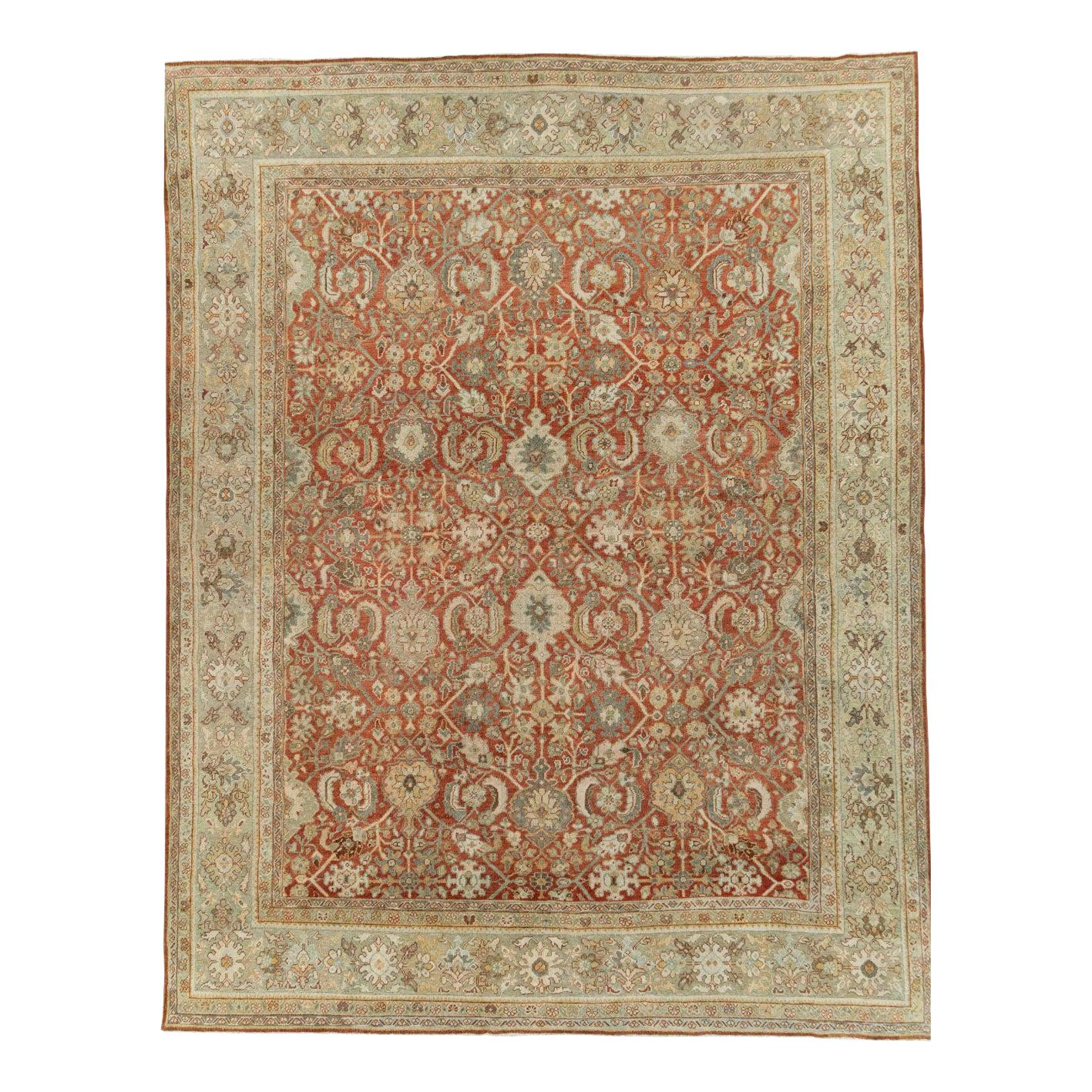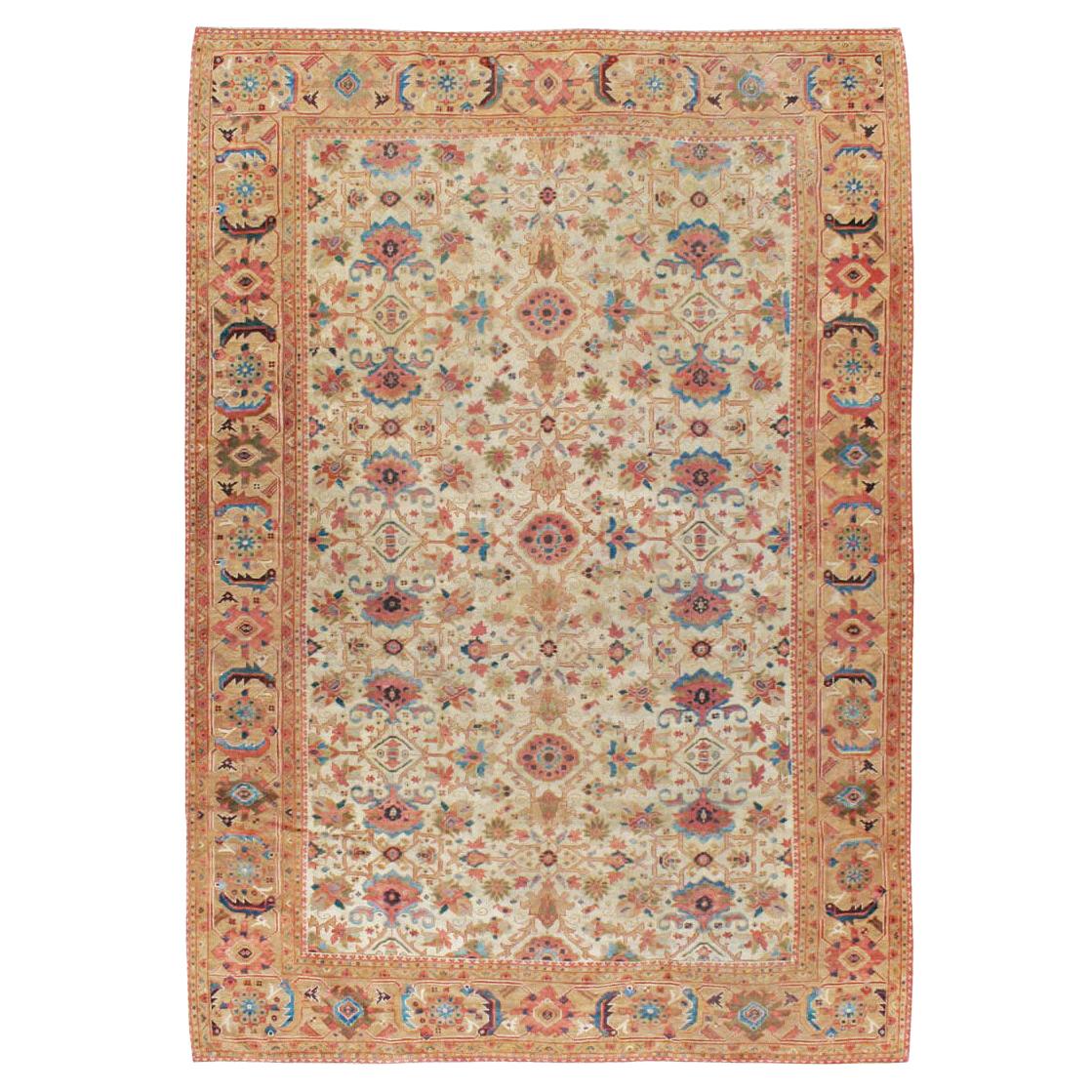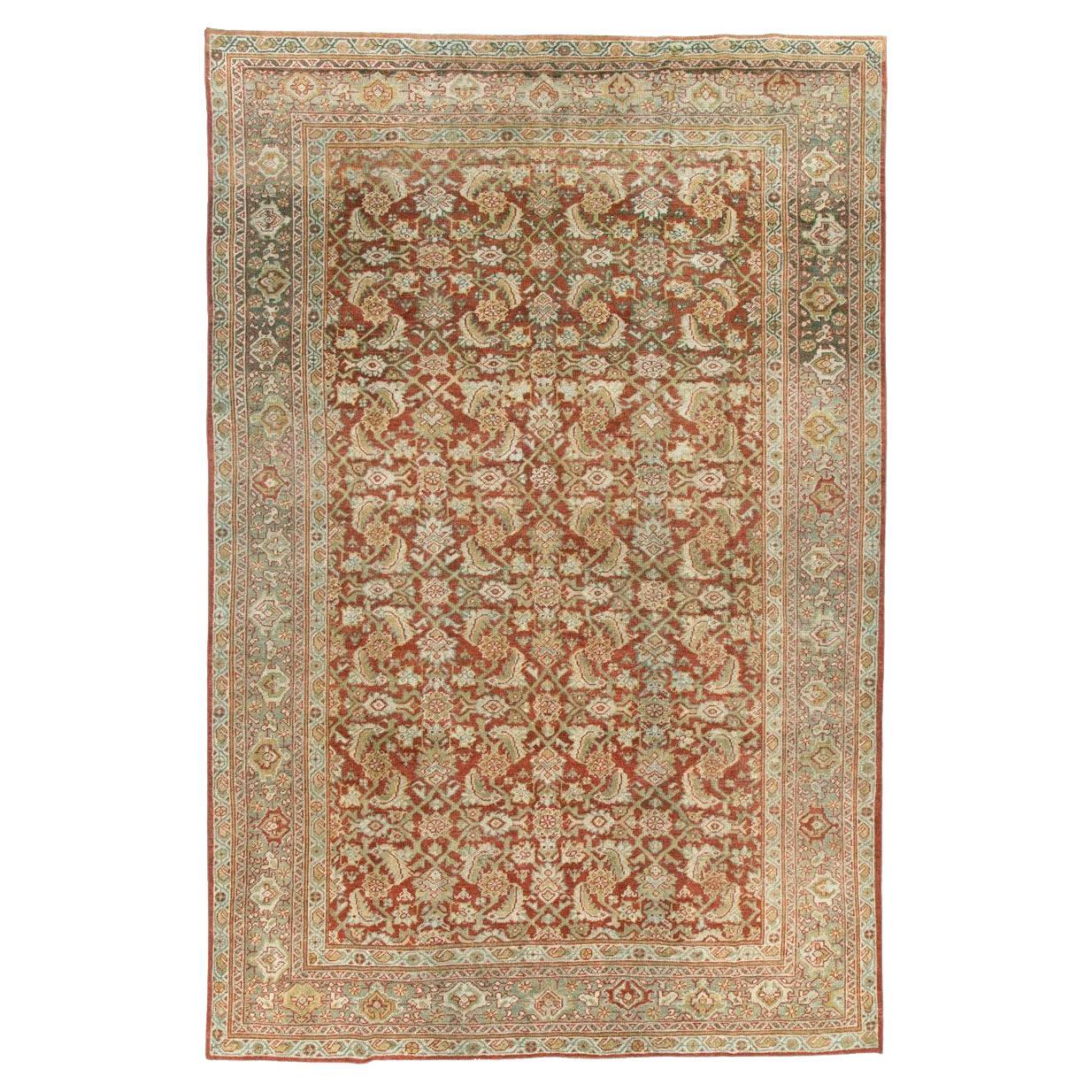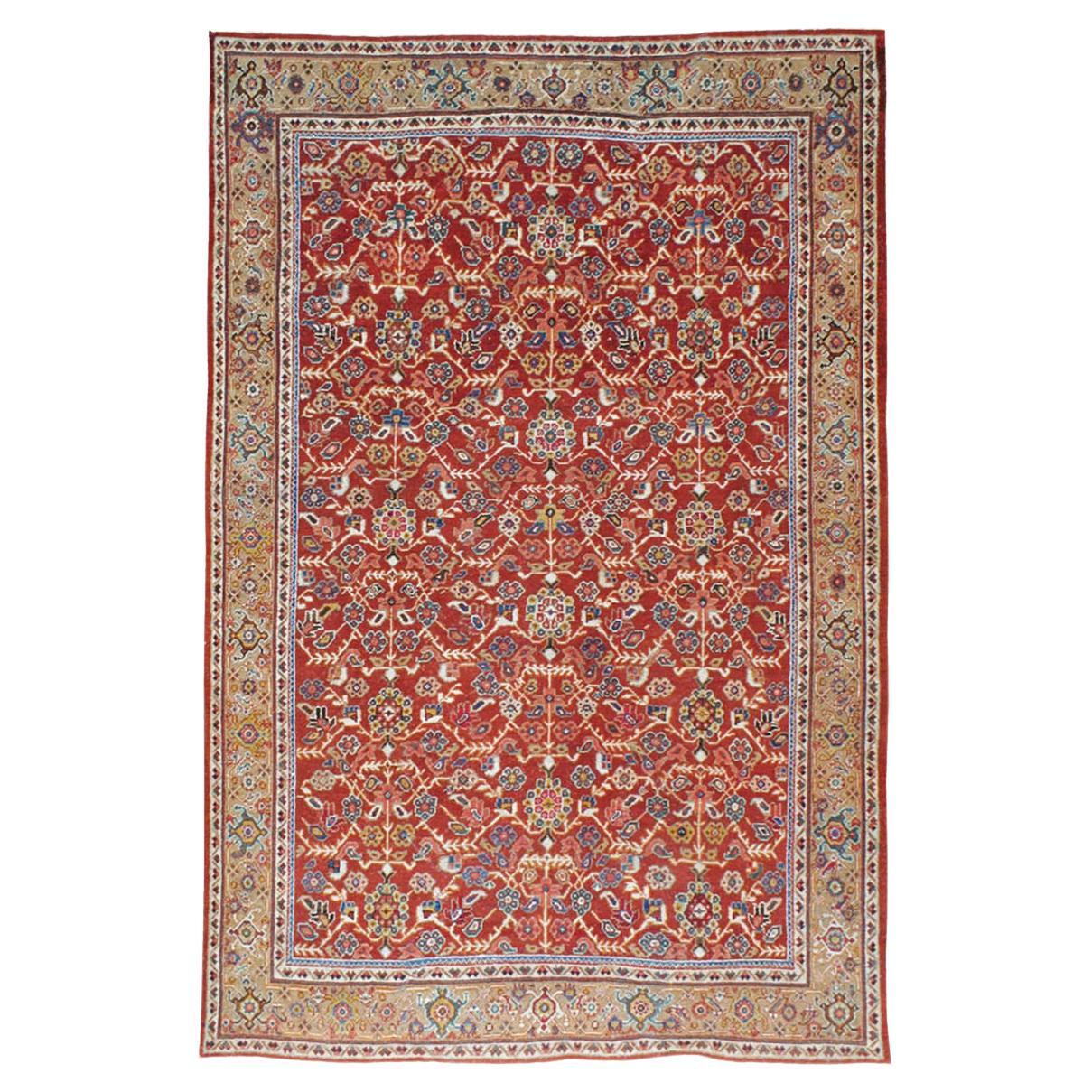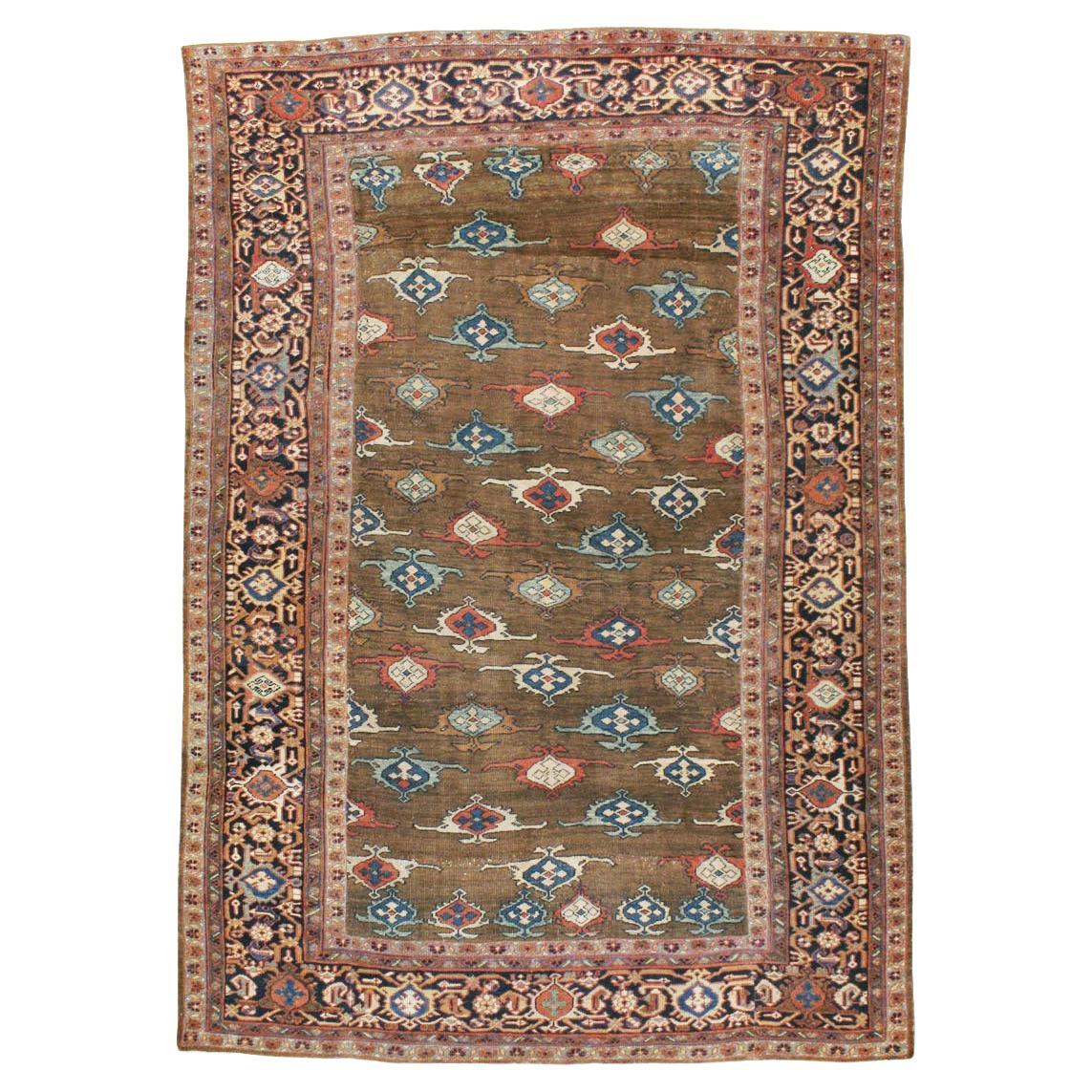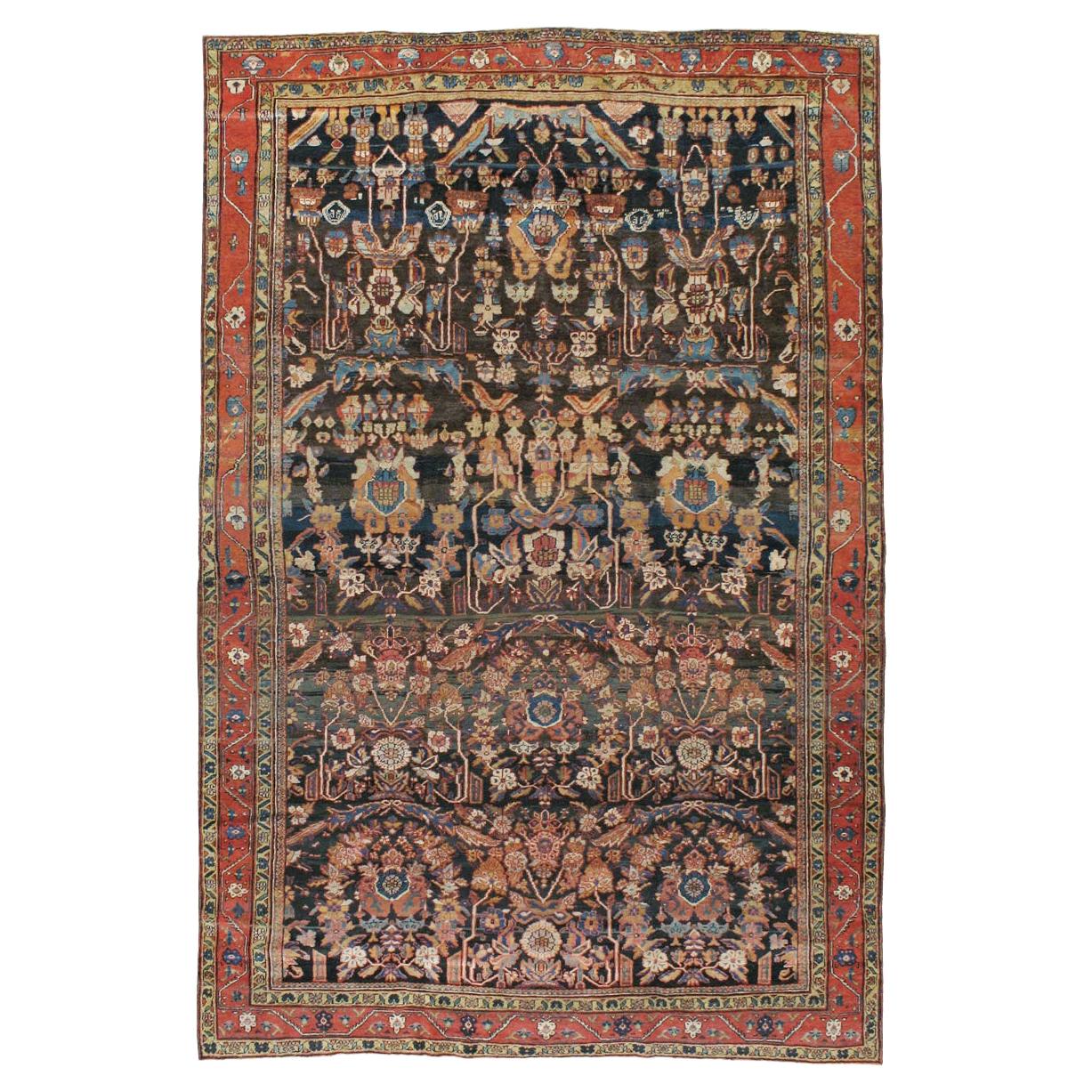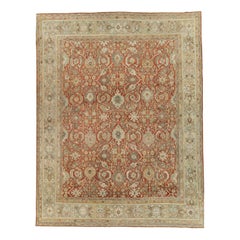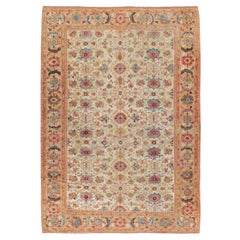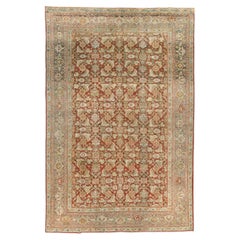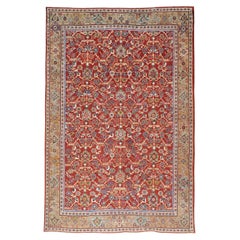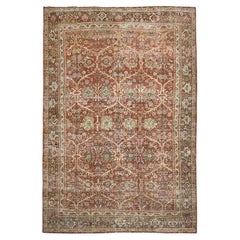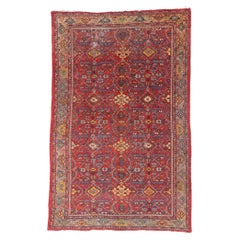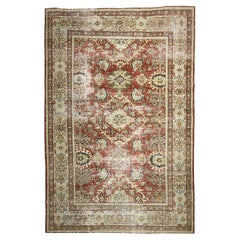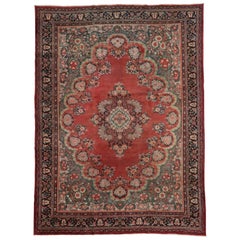Items Similar to Early 20th Century Handmade Persian Mahal Room Size Carpet
Want more images or videos?
Request additional images or videos from the seller
1 of 11
Early 20th Century Handmade Persian Mahal Room Size Carpet
$13,125
£9,899.64
€11,434.18
CA$18,389.03
A$20,447.55
CHF 10,704.66
MX$249,770.59
NOK 134,514.59
SEK 126,537.93
DKK 85,355.39
About the Item
An antique Persian Mahal room size carpet handmade during the early 20th century.
Measures: 8' 4" x 11' 8"
Persia (Iran) is a moderately large county with a very long history and an enormous art/craft/industry built around the handmade carpet. Until the discovery of oil, carpets were the largest Persian export. The craft goes back to ancient times, although the history is more broken than one might expect or desire. The Pazyryk rug dates from the 3rd/4th century B.C.E., but really no carpets before 1500 or so survive in any sort of numbers. Persia is an upland plateau region, semi-arid in many places, verdantly fertile in others, and a perfect base for a pastoral economy. Sheep beget wool and wool begets rugs. Lots of rugs. Almost every province, city, town, village and tribe made or makes rugs with distinctive local characteristics. The rug literature identifies many of these, but thousands of more locales and tribal segments cannot be connected to known examples and vice versa.
There are essentially three (or four) distinct rug genres: the urban workshop formal rug; the village informal type; and the tribal/nomadic really informal kind. A fourth type is the royal or imperial carpet, woven for the Shah in court ateliers. Workshop, village and tribal rugs will be considered in more depth in specialized essays. Persian rugs have to be woven in Persia. Being “in the style of….” does not count. On the other hand, the universally high standards of Persian rug weaving have raised the levels of carpet craftsmanship all over the rug belt. Everyone wants to be Persian, at least where rugs are concerned. “Persian rug” and “Oriental rug” used to be synonymous.
Persian rugs come in all grades. From ultra-coarse tribal rugs to incredibly fine silks from Tabriz and planned urban Isfahan pieces. Persian rugs also come in all sizes. From miniature throw rugs to pieces as large as a parking lot. In weaves from 20 knots per square inch to 2000; in wool, silk, combinations thereof, and more modern synthetic and natural fibers. With natural and synthetic dyes. Most Persian weavers are women, in all contexts, but everybody can weave rugs. The Great Persian Carpet Revival began in the 1870s and the industry mushroomed, with many cities, villages, and tribes taking up or radically expanding rug weaving, from an occasional domestic art to a full-time professional industry. For example, Tehran, the capital, developed an industry-oriented exclusively toward very fine, totally designed carpets for the nascent Persian upper classes. A few rugs were exported, but most went to the wealthy. But this industry did not last past the Interwar period. Other cities have been weaving rugs for centuries. Tabriz, an early capital, has been weaving fine rugs since the 16th century, and with an interruption, has a flourishing industry today. Other cities developed carpet industries as demand expanded around 1900. Before then, nothing much in Mashad, after that lots of activity. Towns like Nain and Qum started from nowhere in the ’30s and now have crafts wholly oriented toward high-quality pieces.
Villages all around Persia have contributed their share to the middle market, but 20th century (and later) pressures have pushed them toward higher qualities, more in the urban manner. This quality upgrade has also affected the nomadic, tribal weavers. Once weaving a few rugs for themselves for domestic consumption, they are now almost exclusively weaving for the market and in competition with urban rugs. So, they have moved up in quality and style.
The Persian carpet is not a static kind of thing, and neither is the craft supporting it. Forget the “timeless east”. Rugs are objects of fashion, with innovations beginning at or near the top, and working their way downward as styles become accepted. Because rugs are a worldwide export, foreign influences seep or crash in. Whole new genres are imported. The red “American Sarouk” detached floral spray style was imported around 1920 and quickly became popular all over Iran, in scatters, room sizes, and runners. Not Persian, but “Persian”. Now accepted everywhere. Rugs are viewed in Iran as art objects, and artists everywhere have always taken advantage of innovations in techniques and materials. In Persia, this has meant machine-spun threads and yarns, synthetic dyes, and chemical washing manipulation. Some experiments lead to real improvement, some are unfortunate dead ends. Some patterns are wildly successful, others are quickly discarded. The allover Herati, Mina Khani, Boteh (paisley or cone), and Gol Hennai patterns have proliferated, and the medallion and corners layout in its infinite variety is virtually synonymous with Persian rugs. Persian weavers seem to have invented all these and more. Today, very finely woven photographic pictorials are fashionable. Who knows if this innovation will last?
A basically semi-desert land needs color, has to have color in its furnishings and household accouterments. Persian rugs are all about color. All types revel in true color: saturated reds, deep blues, salmon, sky blue, cerulean, yellows from mustard to lemon, near black, cream and ecru and ivory, greens from teal to turquoise. From the Orient comes light, and light means color. A real, genuine Persian rug is richly, complexly colored. Maybe too rich. The carpets of the Chahar Mahal (“Bakhtiari”) area are just too colorful, too saturated for the American market. But they go over just fine in Persia. No blah rugs there. Current American decorating trends have shied away from color, complexity, and boldness. Whether these are “coming back” is a question. They have never gone away in authentic Persian rugs.
A tour of the country shows urban weaving centers around the border edge, with a central spine; village weavers in the countryside surrounding the cities; and tribal weavers filling the blank spots almost everywhere. Some towns have been continuously active for centuries, like Kerman; some with interruptions like Isfahan, Kashan, or Tabriz; and some are relative newcomers like Qum and Nain. The picture is incomplete and much of the 18th and 19th centuries have been long ignored. There are large gaps with no extant specimens. But also discoveries of previously ignored tribal and village weaving keep coming. New types get explored and the picture fills in. Whatever story you believe, it is probably only a fraction of the rich history of the Persian carpet.
- Dimensions:Width: 100 in (254 cm)Length: 140 in (355.6 cm)
- Style:Rustic (In the Style Of)
- Materials and Techniques:Wool,Hand-Knotted
- Place of Origin:
- Period:
- Date of Manufacture:Early 20th Century
- Condition:Additions or alterations made to the original: This carpet has been professionally antique washed to soften its tonality.
- Seller Location:New York, NY
- Reference Number:Seller: 249621stDibs: LU882324309272
About the Seller
5.0
Platinum Seller
Premium sellers with a 4.7+ rating and 24-hour response times
Established in 1989
1stDibs seller since 2009
599 sales on 1stDibs
Typical response time: <1 hour
- ShippingRetrieving quote...Shipping from: New York, NY
- Return Policy
Authenticity Guarantee
In the unlikely event there’s an issue with an item’s authenticity, contact us within 1 year for a full refund. DetailsMoney-Back Guarantee
If your item is not as described, is damaged in transit, or does not arrive, contact us within 7 days for a full refund. Details24-Hour Cancellation
You have a 24-hour grace period in which to reconsider your purchase, with no questions asked.Vetted Professional Sellers
Our world-class sellers must adhere to strict standards for service and quality, maintaining the integrity of our listings.Price-Match Guarantee
If you find that a seller listed the same item for a lower price elsewhere, we’ll match it.Trusted Global Delivery
Our best-in-class carrier network provides specialized shipping options worldwide, including custom delivery.More From This Seller
View AllMid-20th Century Handmade Persian Mahal Room Size Carpet
Located in New York, NY
A vintage Persian Mahal room size carpet handmade during the mid-20th century.
Measures: 9' 8" x 12' 6"
Persia (Iran) is a moderately large county with a very long history and ...
Category
Mid-20th Century Persian Rustic Persian Rugs
Materials
Wool
Early 20th Century Handmade Persian Mahal Room Size Carpet
Located in New York, NY
An antique Persian Mahal room size carpet handmade during the early 20th century.
Measures: 8' 9" x 12' 6".
Category
Early 20th Century Persian Rustic Persian Rugs
Materials
Wool
Early 20th Century Persian Mahal Accent Carpet
Located in New York, NY
An antique Persian Mahal accent carpet. The brown field of this west Persian rural smallish carpet displays an extremely well-balanced medium scale allover Herati design with tan, cr...
Category
Early 20th Century Persian Rustic Persian Rugs
Materials
Wool
Early 20th Century Persian Mahal Accent Carpet
Located in New York, NY
An antique Persian Mahal accent carpet. There are three vertical design axes with rosette bosses and angular undulating vines on the closely decorated warm madder red field of this P...
Category
Early 20th Century Persian Rustic Persian Rugs
Materials
Wool
Early 20th Century Handmade Persian Mahal Room Size Carpet
Located in New York, NY
An antique Persian Mahal room size carpet handmade during the early 20th century.
Measures: 8' 0" x 11' 5".
Category
Early 20th Century Persian Rustic Persian Rugs
Materials
Wool
Early 20th Century Handmade Persian Mahal Room Size Carpet
Located in New York, NY
An antique Persian Mahal room size carpet handmade during the early 20th century.
Measures: 7' 9" x 11' 7".
Category
Early 20th Century Persian Rustic Persian Rugs
Materials
Wool
You May Also Like
Early 20th Century Antique Persian Mahal Rug
Located in Los Angeles, CA
Beautifully Vivid Rust Antique Persian Mahal / Sultanabad Carpet , Country of Origin / Rug Type: Persian Rugs, Circa Date: 1900 – This brilliant antique Persian Mahal rug glows with ...
Category
Early 20th Century Persian Sultanabad Persian Rugs
Materials
Wool, Cotton
1900's Persian Mahal Carpet with Traditional Style
Located in Dallas, TX
79185 Antique Persian Mahal Rug, 07'03 x 11'04. With the grandeur of an ancient garden illuminated by firelight, this hand-knotted wool antique Persian Mahal rug unfurls a dazzling o...
Category
Early 20th Century Persian Aesthetic Movement Persian Rugs
Materials
Wool
Early 20th Century Antique Persian Mahal Rug
Located in Los Angeles, CA
Antique Persian Mahal Rug 4257, Country of Origin: Persian Rugs, Circa Date: 1910– A delightfully complex design spreads across this antique Persian rug, rich with warmth due to the ...
Category
Early 20th Century Persian Sultanabad Persian Rugs
Materials
Wool, Cotton
Antique Persian Mahal Rug with Rustic English Country Style
Located in Dallas, TX
73370 Antique Persian Mahal Rug with Rustic English Country Style. Boasting a floral bounty in a range of warm hues, this hand-knotted wool antique Persian Mahal rug is a delightful ...
Category
Early 20th Century Persian Country Persian Rugs
Materials
Wool
Early 20th Century Persian Mahal Rug
Located in New York, NY
Persia, ca. 1910
Measures: 9'11" x 8'1" (302 x 246 cm)
Handwoven.
Category
Early 20th Century Persian Persian Rugs
Materials
Wool
Vintage Persian Mahal Rug with English Traditional Style
Located in Dallas, TX
74580 vintage Persian Mahal rug with English Traditional style 04'02 x 06'09. Candid and sincere, this hand knotted wool vintage Persian Mahal rug beautifully embodies an English tra...
Category
Mid-20th Century Persian Rustic Persian Rugs
Materials
Wool
More Ways To Browse
Antique Table Ornaments
Denmark Oak Dining Table
English Cup
French Glass Display Table
Midcentury Black Leather Sofa
Modern Sofa Metal Leg
1920S Vintage Fabric
Angled Desk
Antique Brass End Table
Arne Jacobsen For Fritz Hansen
Christofle Plate
Foot Bench
Iron French Side Table
Scroll Leg Console Table
Small Brass Animals
Stainless Steel Round Table
Vintage Craftsman Table
White Oak Cocktail Table
